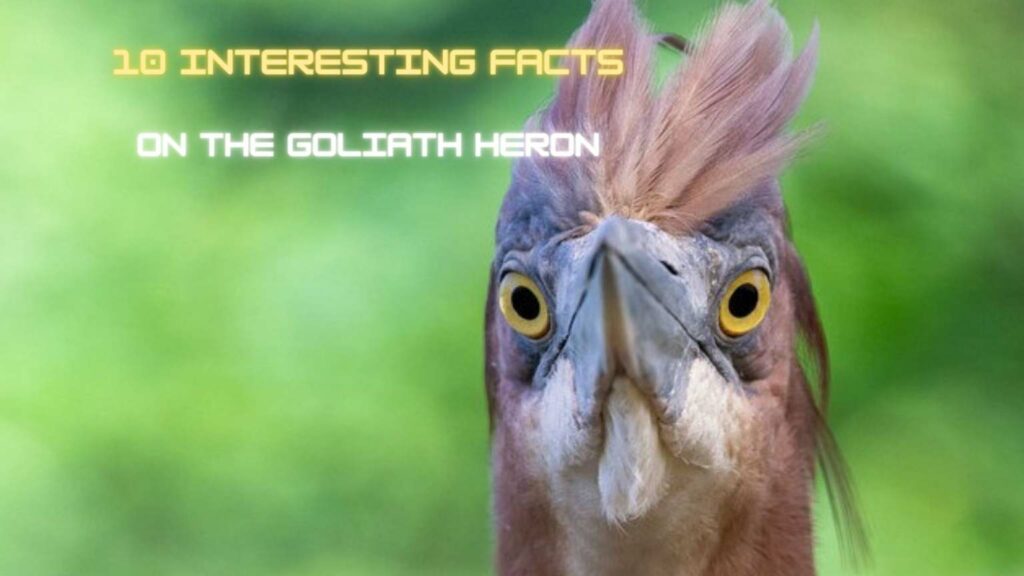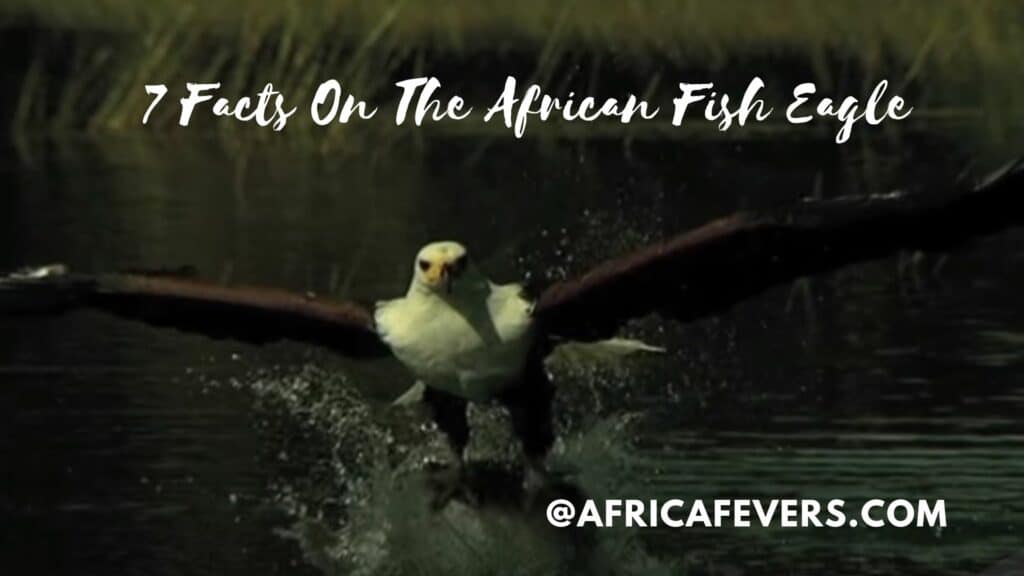The greater flamingo is the largest and most widespread of any flamingo specie, not only in Africa but also globally. That’s just one of the many facts on the Greater Flamingo that we will be talking about today.
They are generally paler when compared to other species, but are nonetheless magnificent birds to spot.
Across Africa, they will be found in a “stand” ( this is what a flock of flamingos is referred to.) together with the more colourful lesser flamingo.
Now, let us get some insights on the greater flamingo, from how they get their pink plumage, to where it is they prefer to stay.
Want to find the best binoculars for a safari? Check out my blog post here!
How To Identify A Greater Flamingo?
Just as their name suggests, these birds are greater than any other flamingo species, standing at around 1.5 m (5 ft) tall and weighing between 2 – 4 kg (4.4 – 8.8 lbs.).
They have an impressive wingspan of between 1.4 – 1.7 m (4.5 – 5.5 ft).
This size advantage enables them to wade into deeper waters than other flamingo species in search of food.

It has long thin webbed legs, with scales on both the legs and feet to protect them from damage in salty water.
Adult greater flamingos are mainly pale pink and white, with narrow wings and an elongated flexible neck.
The primary and secondary wing feathers are black, and are visible during flight, while the median and lesser wing coverts are bright red and the rest of the wing area is pale pink.
The bill is pink with a black tip that curves downwards and the eyes are a bright yellow.
They have a flight posture that is identifiable, with the neck extending forward in a straight posture, mirrored by the backward trailing legs.
Adolescent flamingos are usually paler than adults with black legs, while chicks usually have grey fluffy down.
The bright pink and red plumage colour of flamingos usually comes from carotenoid pigments that come from the organisms they feed on.
The colour also comes from secretions from the uropygial gland which they smear and spread over their feathers. This explains why during the breeding season, greater flamingos are usually pinker than usual, due to an increase in secretions from this particular gland.
Are you thinking about buying binoculars to have a good look at all the magnificent birds of Africa?
What do Greater Flamingos feed on?
The exotic bird called the Greater Flamingo is diurnal (it feeds mainly during the daytime), is a filter feeder like ducks and is omnivorous.
Their diet consists of shrimps and other crustaceans that give them their distinctive pink colour. They also feed on grass shoots, seeds, algae, decaying leaves, insect larvae, tiny fish, crabs, plankton, and molluscs.
They use their long legs and webbed feet to stir up the water and disturb the organisms which are then swept into the mouth.
They suck in water into their partially opened mouth, which is then squeezed out by the tongue and forced through filters along the bill edges, removing the salty water and leaving the tasty morsels behind.
As they feed they will immerse the whole head in water for about 20 seconds, then come up for air and repeat the process again and again until the feeding activity is done.
The Greater Flamingo feeding style 😉 :
Distribution, Habitat, and The Greater Flamingo Migration.
The greater flamingo will rarely be found in areas of freshwater other than freshwater inlets for purposes of drinking or bathing.
They inhabit warm saltwater habitats such as alkaline and salty lakes, mudflats, shallow coastal lagoons, and estuaries.
The greater flamingo is abundant in Africa, in countries such as Kenya, Tanzania, Botswana, and Namibia.
Other than Africa they can also be found in Southern Asia, the Middle East, and Southern Europe.
As for migration of the Greater Flamingo, it seems that they don’t migrate that much, and only migrate when the water gets too cold or freezes, for example, or when the climate gets warmer elsewhere.
Breeding and Reproduction Of the Greater Flamingo.
The breeding season starts from April to May, and flamingos will gather in large groups on warm expansive muddy flats.

Flamingos, are monogamous and pairs breed for life. As the breeding season starts, the birds will congregate and perform spectacular synchronised dance routines involving honking, neck stretching, and preening.
The nest is made by the pair and is made of hardened mud, with a shallow depression at the top.
With the absence of mud, the nest can be made of stones and debris and is lined with feathers, grass and twigs.
To build the nest, one of the pair drags mud with its bill over the nest site and compacts it using its feet.
The female usually lays one chalky white egg, and the mating will take turns incubating the egg which usually hatches after 27 – 31 days.
The chick is white and grey when hatching and will take another 2 more years before getting their pink colouration.
At birth, the chick usually has a straight bill which starts to curve after one month and will be able to properly filter feed after two and a half months.
They become fully grown after 2 years and are able to mate after 3 years, but will not breed until they are between 5 and 10 years.
Want to find the best binoculars for a safari? Check out my blog post here!
General Behaviours Of the Greater Flamingo.
The greater flamingo is an extremely social bird and will live in flocks of about 10 – 12 birds to well over 10,000 birds in some African lakes.
These stands give flamingos safety, particularly from predators. While they are feeding, the flock remains tightly packed with individuals looking out for predators.
In flight, they are a spectacular sight with their necks outstretched in front and their legs trailing behind and will form long trailing lines or irregular shapes.
They can sometimes behave a little peculiar, as you can see in the video below:
On the water they are usually seen standing on one foot, which might be to help in either conserving heat in cold waters.
They are strong but rare swimmers and graceful powerful fliers.
During flight, they fly at an average of 56 kph (35 mph), and during migration will fly quite high to avoid predation by raptors and can fly distances of up to approximately 640 km (400 miles) in a single day.
As they fly, they tend to prefer a tailwind, and clear night skies as this makes flying easier and quicker.
Greater Flamingo Facts: FAQS
You still might have some questions on the Greater Flamingo, so here we go trying to answer them all 🙂
· How long do greater flamingos live?
In the wild, the average lifespan of the greater flamingo is between 30 – 40 years while in captivity, they can reach up to 60 years.
· Why do greater flamingos fly in formation?
Greater flamingos will fly in a V formation. During this formation, the bird in front flies slightly above the one behind it, thereby reducing drag from air resistance.
While flying each flamingo takes turns leading the flock and taking most of the resistance from the wind.

When it’s tired, it goes back to the formation and another flamingo takes its place at the front.
Also while flying, they make loud noises that are quite similar to the honking noises that geese make.
This serves as a communication between the birds to help them keep a tight formation and organised as they migrate.
· Why are greater flamingos in captivity paler than their counterparts in the wild?
Flamingos get their pink colouration from the carotenoid pigments they get from their food.
The more vibrant the colour the better a flamingo is fed, that is in the wild.
In captivity, you will find the birds are given food designed to meet their dietary needs, but that does not contain the carotenoid pigment present in food out in the wild.
This will lead to greater flamingos in captivity having paler colouration when compared to their wild counterparts.
To ensure the bright pink plumage, birds in captivity have to be fed a special diet with enough natural pigments.
My Final Conclusion.
I hope that I could hand you enough facts on the Greater Flamingo, but if you have any more questions, please feel free to ask them in the comment section below or join me on one of my social media channels for more pictures and stories of my African travels 😉
I wish you happy travels!
Kind regards,
Lizzy
I now have a YouTube channel as well!
YouTube
Hello Africa travellers!
Who am I? Well, the least you can say is that I am quite crazy about Africa, its nature, its climate, its culture, and more.
As a young woman in my twenties, I had already traveled to several African countries by traveling along in an overlander on my own and mostly camping ( or glamping ) and just fell in love with the diversity of it all.
So much, so that at the age of 26, I went back to university to study biology, which, unfortunately, I couldn’t finish because of health reasons (yes, I got sick from a tropical disease, oh cynicism). But this did not stop my dream of traveling back to Africa several times, and I still do.
My dream was back then to leave Europe and go study animal behavior, especially the elephants (sure, that’s every girl’s dream haha), but I am also very much intrigued by hyenas and other “ugly African animals“.
So, I “kind of” have a little bit of a scientific approach to my articles, when I write about African birds, for example. And most of all: the passion.
But life goes on, you move from one side of the country to the other, you get sick again and top it off with lower back problems, and before you know it, you are over 50 hahaha!
Now, I still travel to Africa, but take it a bit “easier” than the good old camping days, and stay in comfortable, yet affordable accommodations, together with my husband Wouter.
These are some of the countries I have traveled to: Kenya, Tanzania, Zanzibar, Malawi, Zambia, Zimbabwe, South Africa, Namibia, Botswana, Tunisia, and a little bit of Lesotho LOL .
While clearly not being African territory, but Spanish, I also visited Gran Canaria and Tenerife, and location-wise, I consider them “African”, because of their climate and nature, sue me :-p
The last trip I took was to South Africa in the year 2023, and it sure got the fevers for Africa back! From the Barberton mountains to the Drakensberg and the Southcoast, one month wasn’t enough at all to see the whole country, so we’ll be back! At ease and with a little bit more luxury than in my younger days haha!
I wish you happy travels!
Kind regards
Lizzy











I have seen the flamingo in South Africa, but I never knew it is omnivorous. I used to think they were herbivores. What got me drawn to them is their social lifestyle. Unlike other birds, they are large and still live in clusters. Like you rightly said they can stay together for as much as a thousand. Thank you for this detailed look at this unique creature
Hi Parameter,
I am happy to have informed you a little bit more about the flamingo and I hope you will have some more fantastic bird watching to do in Africa soon!
Kind regards,
Lizzy
As someone from South Africa, I was delighted to learn from your article about the fascinating Greater Flamingo and its unique characteristics. I found it particularly interesting that the pink colour of the flamingo’s feathers comes from the pigments in the shrimp and algae that they consume. It’s amazing how nature works! Your article provides a great reminder of the beauty and diversity of the animal kingdom and the importance of preserving these incredible creatures for future generations to appreciate.
Hi ChrisnaE!
I am so happy to have informed you some more about the Greater Flamingo, it is a real compliment because you are from South Africa yourself 😉
I wish you happy bird watching!
Kind regards,
Lizzy